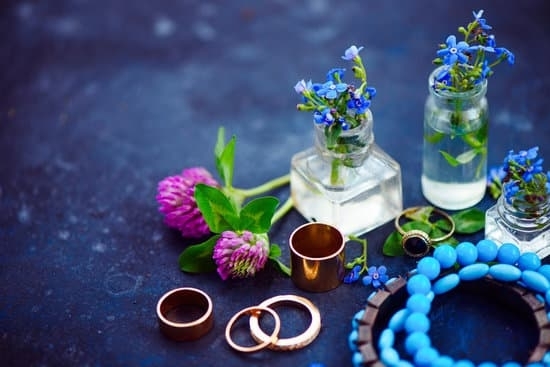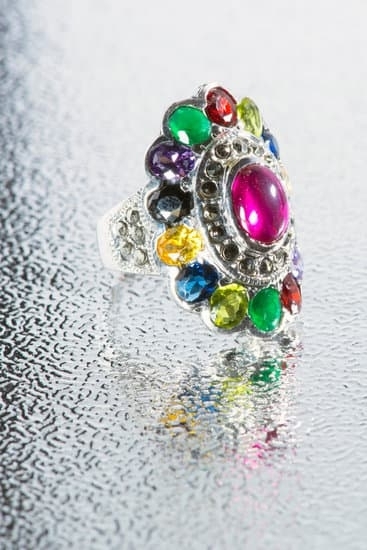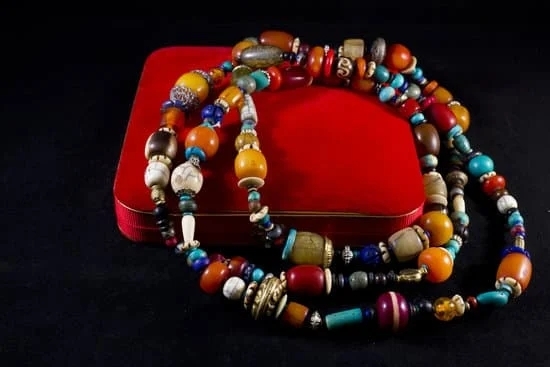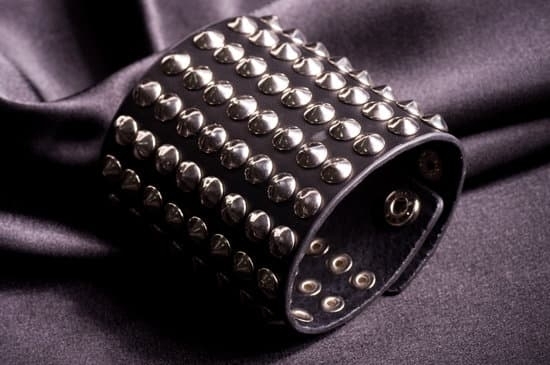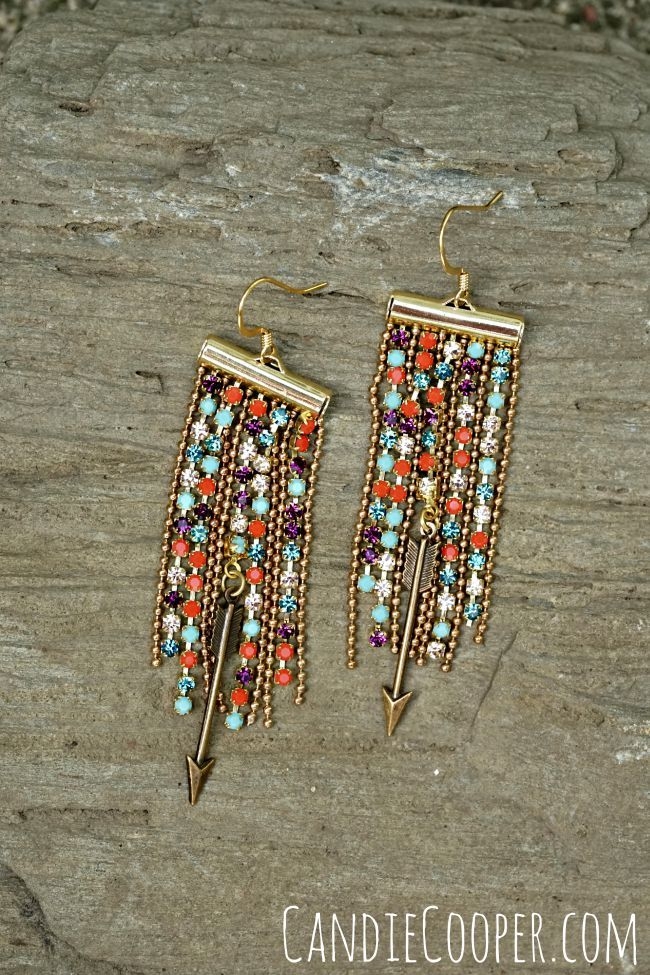Jewelry maintenance is an essential part of preserving precious ornaments due to the delicacy of these items. Over the decades, the need for jewelry maintenance has vastly increased which can be attributed to a few factors.
To begin, as ornaments have become more diverse and complex with intricate designs and precious stones, it is important to take care of them accordingly. In addition, increase in popularity in fashion accessories such as chokers and pendants demands that they be well taken care of as no one prefers a damaged jewelry piece.
The need for maintaining good quality jewelry has been around since its inception; however, measures have changed to ensure that the pieces remain in top condition over time. Before its widespread acceptance, natural materials such as wood and seashells would be used for gems which demanded minimal maintenance.
This was because the softness of these materials made them more resilient and less likely suffer from wear and tear. However, with modern-day technology resulting in synthetic materials being utilized more often for ornamental pieces, cleaning and oiling have become routine activities for any proprietor with an appreciation for their gemstones.
As time passed by, several approaches were implemented to preserve jewelry over periods which included cleaning methods utilizing warm water and silver polish cloths which made it easier than ever before to get rid of even the most stubborn grime on gold ornaments. Additionally, this ancient method removed dust particles from delicate stones thereby preventing fading away caused due to dust accumulation around them over long periods of time.
The Dos and Donts of Jewelry Maintenance
Jewelry maintenance is an important part of owning jewelry. Taking the steps to understand what needs to be done to keep them looking their best is key to having beautiful pieces that last for a lifetime. To maintain your jewelry, there are a few dos and don’ts you should adhere to for the optimal care.
First, avoid exposing your jewelry to abrasive materials such as polishing pads or steel wool. These can cause scratches and abrasions on the surface of the piece and gradually damage and degrade its quality. Harsh chemicals like bleach should also be avoided as they can cause discoloration or weaken the structure of certain metals.
Additionally, when not in use, jewelry should ideally be stored away from the sun, in a dry place preferably at room temperature. Jewelry boxes, cases or pouches all make perfect storage companions but if you have multiple pieces then store them apart so they don’t rub against each other which can cause scratches and chips on the surface.
Over time, your jewelry may start looking duller or begin to show signs of wear and tear; this is when it could benefit from being taken in for professional cleaning and repair services. At such times it is best to take them into jewelers who can diagnose any issues with it and recommend treatments accordingly.
The professionals will also ensure that any repairs made do not affect its original integrity or beauty making it look good as new. Regular inspections by these professionals are critical for the lifelong beauty of your heirloom jewels.
Cleaning Methods for Gemstone Jewelry
When it comes to keeping gemstone jewelry looking its best, the mainframe of maintaining the gemstones is through cleaning. The cleaner a gemstone appears the brighter and more radiant they look. To make this possible, here are some recommended methods and solutions to use when cleaning different types of gems:
Diamonds are widely known as one of the hardest and most durable types of stone available. Because of this, they require very minimal maintenance in order to keep their shine, but even diamonds need a good cleaning now and then.
To clean diamond jewelry you can use warm water with a few drops of mild dish soap (such as Dawn), let it sit for 15-20 minutes and then carefully scrub with a soft bristled brush or an unused toothbrush, as long as it’s still lab certified/certified loose diamonds.
Once that’s done rinse with fresh water, pat dry gently with a lint free cloth or paper towel and allow to air dry completely before putting away or wearing again.
Pearls are traditionally delicate stones that will often require special care in order to maintain their quality over time. One way to ensure your pearls remain lustrous is by rinsing them with lukewarm water after wearing them, making sure no gritty dirt has settled in any crevices that may be hard to remove later on down the line.
For deep cleaning you can mix together four parts tepid water and one part diluted ammonia-free gentle shampoo, followed by an immediate rise into a bowl full of cold running water. Dry off each pearl individually with a soft cloth such as suede or velvet before restringing them back onto the necklace length preferred.
Turquoise gems tend to get dirty easily due to the minerals found within them so regular maintenance should be taken if wanting it last indefinitely without losing its quality from neglect. One easy way you can clean turquoise is by using plain natural sea salt which is mixed with warm water until dissolved; use this mixture directly on soiled areas until softened or soaking for anywhere up to half an hour if needed.
After enough solution has been soaked on them wipe off excess dirt & debris before rinsing off under running tap water until clear before leaving out to air dry completely prior returning it someone’s wardrobe choices.
Cleaning Methods for Gold and Silver Jewelry
Cleaning and maintaining precious jewelry such as gold and silver can be a daunting task as proper care must be taken to preserve the life of the metal. In most cases, dirt, soap residue, skin oils, and oxidation can cause discoloration and damage to the material. Fortunately, with a few supplies you can easily clean your treasures at home.
The first step in cleaning most types of jewelry is to remove the majority of any solid debris of the piece by using a soft cloth or toothbrush dipped in warm water. If there are any stones set in the piece you should be mindful not to damage them while wiping away dirt.
After completing this step you can make a cleaning solution by mixing one teaspoon of dish liquid with one cup of warm water, create several batches depending on how many pieces you are trying to clean at once as it’s important not to cross contaminate between each piece.
Place the item into the basin so that jewelry is completely immersed in liquid for 10-15 minutes stirring lightly (if needed). After adequately soaking, remove each metallic surface from solution washing off any remaining residue under clean running water with cloth or toothbrush and lightly dry with a lint free cloth.
If your piece requires more intensive polishing and buffing there are several methods one can try; these include products such as polish paste or polishing cloths for gold silver brass and other metals available for purchase at most hardware stores.
When using pastes be sure to use microfiber or soft clothe rub product against grain thoroughly until desired results have been achieved – quick circular motion works best – when finish wipe off excess cleaner follow with a lint-free clothe lightly spritzed with distilled water if needed.
Lastly store jewelry separately from other pieces in an airtight container like Ziploc bag for extra protection from dust moisture bacteria etc taking this extra step will extend life significantly becoming more valuable over time instead of depreciating quickly due improper maintenance.
Kinds of Jewelry Repair Services
Making sure that jewelry stays in pristine condition can be a challenge given the everyday wear and tear it is subject to. It’s easy to forget how delicate some of our favorite pieces can be, until they become damaged and in need of repair. However, with a bit of know-how, it’s relatively straightforward to maintain one’s jewelry collection – and even more so when professional repairs are available as an option.
It pays to understand when specialized repair services might necessary for your jewelry. Sudden tears into metal bands or clasps often require either a quick fix by one’s self or professional assistance, depending on the level of damage sustained. Further, if one’s precious stones seem dull or out-of-place after setting changes or other work is performed, seeking an expert may prove most beneficial in restoring the original luster and texture.
Most professional goldsmiths offer a range of services including repairs to precious metals such as gold or silver, dent removals, clasp replacements & adjustments , refinishing & polishing , ring resizing & re-shaping , stone replacement and engraving. With this range of options available for jewelers both novice and experienced, restoring any kind of piece should be simple.
The decision to repair something personally or bring it into a reliable service center is ultimately up to the individual; DIY solutions typically yield promising results depending on what has been done before, alongside more complex repairs that might require specialized tools many opt for working with a skilled craftsmen who will treat their pieces with utmost care.
Whichever route is taken for repairing worn jewelry items; stocking up on all essential supplies and calling upon expert help from time to time will ensure that all pieces stay beautiful for much longer than expected regardless of their history.
How to Store Jewelry
Proper storage of jewelry is essential to maintaining its beauty and sparkle for years to come. The most ideal method is investing in pieces that are specifically designed for storing jewelry such as a jewelry box or armoire with drawers and compartments tailor-made for protecting delicate pieces.
Jewelry boxes provide an organized space to store all types of pieces, from everyday wear to fine artwork. These storage solutions reduce the opportunity for damage and entanglement due to keeping items neatly separated and secure.
When it comes to caring for your jewelry on a regular basis, avoid chlorine, ammonia and other harsh chemicals while cleaning them. Instead, use a mild soap and water combination with a soft cloth or brush.
Soft bristled toothbrushes are great tools to delicately remove residue without causing any harm to sensitive gemstones or metals. As well it is important to wipe away any moisture after cleaning in order to prevent tarnishing or discoloration of the metal components of your pieces.
For extra protection, you can also purchase special anti-tarnish strips that absorb oxygen and harmful gases that can lead tarnish; this allows them to continue looking their best for years down the road. Additionally, bringing your jewelry into the professionals once in awhile helps keep them clean by getting rid of dirt in hard-to-reach places and providing additional services such as rhodium plating for silver items or polishing for dull stones.
Taking these steps with your jewelry ensures it will continue looking beautiful until you’re ready to hand it off down generations.
What to Look for When Shopping for New Jewelry
When shopping for new jewelry there are many factors to consider. Different materials can affect the strength and durability of a jewelry piece. Gold and silver are both strong metals but they should be taken into account depending on how often the item will be worn.
Gold is usually softer and easier to scratch than silver, so it isn’t ideal for everyday wear if you don’t have the budget for expensive 24k gold pieces that are much more resistant to damage. If you want something a little sturdier, consider getting jewelry in titanium or platinum which provide more protection from scratches and are also hypoallergenic solutions for people with sensitive skin.
Apart from material the type of closure mechanism matters too. Rings, bracelets and necklaces usually come with either clasps (see-through) or pieces that snap together using magnets, pins or smal screws.
Clasps these days tend to be strong enough to stay locked even when pulled at strongly but should still be tested before buying; buy looking inside them under a magnifying glass is often recommended as it gives an indication of their integrity in design. For example if they look corroded you might want to look elsewhere because over time their hinges will most likely bend due to exposure to air and water, not allowing them to close properly.
Finally, depending on how often you plan on wearing the piece making sure it goes through rigorous restrictions tests before buying is essential. Jewelry can end up breaking when exposed to different temperatures – such as extreme temperatures when outside in the summertime – or during activity such as exercising, so doing these tests not only prioritizes safety above all else but also ensures your valuable buys stay intact for many years to come.
Closing
Maintaining jewelry is essential for extending its life and making it look as beautiful as the day you purchased it. The first step to take for proper jewelry maintenance is to clean your pieces regularly. For gold, silver and gemstones, use a soft cloth and warm soapy water and gently scrub any dirt or grease off the metal surface.
For pearl jewelry, avoid using soapy water to prevent damaging the fragile organic material. Instead, use a damp lint-free cloth to remove dirt and oils from the pearls.
It’s also important to have your jewelry professionally inspected every 6 months by a qualified jeweler who can easily detect signs of damage or weakness that may not be visible by the naked eye before it’s too late. This will allow them to make repairs immediately if needed, instead of waiting until more serious damage has occurred during everyday wear.
Your jeweler will also be able to perform necessary coloring treatments such as polishing and rhodium plating on white gold pieces if needed.
Finally, when not being worn, it is important to store jewelry properly in order to protect against moisture damage or scratching of softer materials such as gold or silver pieces combined with diamonds or gems. You should invest in an appropriate box or pouch for each piece if possible.
Ensure all cleaning methods are kept away from any valuable items as there could be corrosive chemicals present that can cause harm over time when used in close proximity to delicate jewels or metals. Finally, you should regularly check stones for tightness just to be sure everything is secure.
Jewelry maintenance involves regular cleaning as well as professional care and inspections every six months followed by storing all pieces properly when not being worn in order keep items looking their best while also preventing wear and tear over time due its everyday use. Taking preventative measures now helps maintain appearance longer into the future without unnecessary replacement costs found with neglected pieces requiring sudden repairs because of underwhelming care practices over time.

Welcome to my jewelry blog! My name is Sarah and I am the owner of this blog.
I love making jewelry and sharing my creations with others.
So whether you’re someone who loves wearing jewelry yourself or simply enjoys learning about it, be sure to check out my blog for insightful posts on everything related to this exciting topic!

